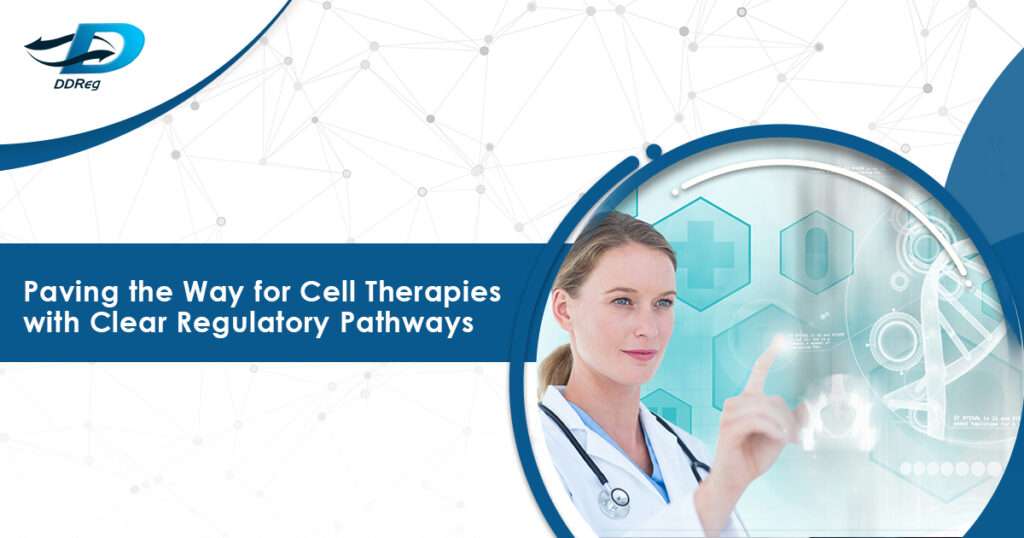
Cell-based therapies in oncology represent a transformative approach to cancer treatment. By leveraging the power of living cells often from the patient’s own immune system—these therapies are designed to precisely target and eliminate cancer cells. Notable examples include chimeric antigen receptor (CAR) T cell therapy, where a patient’s T cells (a type of immune cell) are genetically modified to recogniz and attack cancer; tumor-infiltrating lymphocyte (TIL) therapy, , where immune cells from the tumor are expanded and reinfused; and natural killer (NK) cell therapies, which harness another potent immune cell type to destroy cancer cells.
As these therapies evolve, understanding the complex regulatory environment becomes essential for ensuring timely patient access to safe and effective treatments. This blog explores the major regulatory pathways that support the development and approval of cell-based oncology therapies across key global markets.
The Regulatory Framework for Cell-Based Therapies
Given their complexity and potential, cell-based therapies are subject to stringent regulatory scrutiny. Regulatory authorities worldwide have developed specialized frameworks and expedited pathways to balance innovation with safety, quality, and efficacy especially for therapies targeting serious or life-threatening conditions.
United States: FDA’s Expedited Programs for Cell-Based Oncology Therapies
In the U.S., the Food and Drug Administration (FDA) regulates cell and gene therapy products through the Center for Biologics Evaluation and Research (CBER), specifically its Office of Therapeutic Products (OTP). Development typically begins with the submission of an Investigational New Drug (IND) application before initiating clinical trials.
To accelerate development and review, the FDA offers several expedited programs:
- Fast Track Designation: For therapies addressing serious conditions with unmet medical needs. It allows for rolling review and more frequent communication with FDA.
- Breakthrough Therapy Designation: Offers intensive FDA guidance and organizational commitment to expedite development.
- Regenerative Medicine Advanced Therapy (RMAT) Designation: Specifically for regenerative therapies (including cell and gene therapies), RMAT grants all the benefits of Fast Track and Breakthrough Therapy and enables early discussions about surrogate endpoints and accelerated approval pathways.
- Priority Review: Shortens the review time for marketing applications from the standard 10 months to 6 months.
After successful clinical trials, a Biologics License Application (BLA) is submitted, which includes comprehensive data on chemistry, manufacturing, controls (CMC), preclinical and clinical results, and labeling. While multiple designations can be granted simultaneously (e.g., Fast Track + RMAT), all products must meet FDA’s standard evidence requirements for safety and efficacy.
European Union: EMA’s Advanced Therapy Medicinal Products (ATMP) Framework
In the EU, cell-based oncology therapies are regulated as Advanced Therapy Medicinal Products (ATMPs) under Regulation (EC) No. 1394/2007. Sponsors may request an official classification from the Committee for Advanced Therapies (CAT) to confirm ATMP status early in development.
Key regulatory features include:
- Centralised Marketing Authorisation Procedure: Mandatory for ATMPs, this process involves a single application submitted to the European Medicines Agency (EMA), covering all EU/EEA countries.
- PRIME (PRIority MEdicines) Scheme: Offers early, proactive support for promising therapies that address unmet medical needs. PRIME accelerates development by providing enhanced scientific advice and facilitating faster regulatory decisions.
- During the assessment process, CAT appoints a (co-)rapporteur to provide expert oversight tailored to advanced therapies.
The EMA’s centralised procedure ensures that approved ATMPs can be marketed throughout the EU with one license, streamlining access across member states.
Japan: PMDA and the SAKIGAKE Designation
In Japan, the Pharmaceuticals and Medical Devices Agency (PMDA) oversees regenerative medical products, including cell-based therapies. The SAKIGAKE designation—which means “pioneer”—encourages early development and prioritization of innovative products.
SAKIGAKE offers:
- Prioritized consultations and early engagement with regulatory authorities
- Shortened review timelines, targeting six months
- Potential for premium reimbursement pricing, subject to evaluation by Japan’s pricing authorities
- Conditional approval options, contingent upon robust post-marketing safety surveillance
This framework is particularly beneficial for developers aiming for Japan-first product launches in regenerative medicine and oncology.
Global Harmonization and International Guidelines
Efforts to harmonize regulatory standards globally help reduce duplication, align expectations, and facilitate broader access. Two key organizations driving this are:
- International Council for Harmonisation (ICH): Offers guidelines like ICH Q5D, which outlines principles for cell substrate characterization in biotechnological products. Adhering to ICH guidelines ensures quality and consistency across multiple jurisdictions.
- World Health Organization (WHO): Provides frameworks for cell, tissue, and gene therapies. In 2023, the WHO released guidance encouraging regulatory convergence, reliance, and cooperation to improve global access to innovative therapies.
EMA–FDA parallel scientific advice initiatives and joint statements further support harmonized expectations and reduce regulatory fragmentation for global sponsors.
Comparison of Key Regulatory Pathways for Cell-Based Oncology Therapies
Region | Regulatory Body | Primary Pathway | Accelerated Option |
United States | FDA (CBER) | Biologics License Application (BLA) | Fast Track, Breakthrough, RMAT, Priority Review |
European Union | EMA (CHMP/CAT) | Centralised Marketing Authorisation under ATMP Regulation | PRIME Scheme |
Japan | PMDA | Regenerative Medical Product Designation | SAKIGAKE Designation, Conditional Approval |
Conclusion
The global regulatory landscape for cell-based oncology therapies offers several expedited and specialized pathways to ensure timely development of promising treatments. Designations such as RMAT (U.S.), PRIME (EU), and SAKIGAKE (Japan) allow early engagement with regulators, facilitate scientific advice, and shorten review timelines—ultimately benefiting patients facing life-threatening cancers.
Navigating these evolving frameworks requires strategic planning and expert guidance.
How can DDReg help?
At DDReg Pharma, we specialize in end-to-end regulatory strategy, medical writing, pharmacovigilance, and cutting-edge RIMS solutions to accelerate your product’s journey to market. Our global experience ensures you stay compliant and competitive across all major regulatory environments.
Ready to accelerate your product approvals?
Connect with DDReg Pharma today for tailored regulatory support and consultation.
Read more from our experts on regulatory strategies for cell and gene therapy: Expediting Access to Cell and Gene Therapy Products
